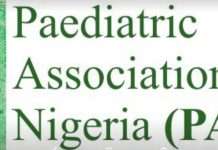A Consultant Clinical and Radiation Oncologist at the Department of Oncology, Federal Medical Centre, Abeokuta, Dr Sharif Folorunso, has said women who wait till 30 to get married or give birth to their first child are likely to have breast cancer.
According to the World Health Organisation (WHO), in 2020, there were 2.3 million women diagnosed with breast cancer and 685,000 deaths globally. As of the end of 2020, there were 7.8 million women alive who were diagnosed with breast cancer in the past 5 years, making it the world’s most prevalent cancer.
Dr Folorunsho says the actual cause of breast cancer is unknown. There are, however, some modifiable and non-modifiable risk factors that can increase the chance of an individual coming down with breast cancer.

“Modifiable risk factors are factors that can be changed such as nulliparity (not giving birth), having first childbirth after age 30, hormonal replacement therapy, obesity, physical inactivity and alcohol consumption.
“If an individual avoids these factors, the chance of having breast cancer will be reduced. Non-modifiable risk factors cannot be changed and include female gender, older age, family and personal history of breast cancer, radiation therapy to the chest, early menarche (first menstruation), late menopause.
“Individuals with non-modifiable risk factors are advised to avoid modifiable risk factors and also have more frequent screening for breast cancer,” he added.
The oncologist added that protective effect of childbearing at younger ages on breast cancer risk is well established.“Women aged 20 to 25 have nearly a 50 per cent reduction in the relative risk of breast cancer compared to nulliparous women (women who have never given birth). Interestingly, for women whose first childbirth occurred over age 35, the risk appears greater than nulliparous women,” he added.
Speaking on how one can quickly detect if one has cancer, the oncologist although said there are claims that husbands sucking their wives’ breasts can help reduce the risk of contracting cancer is not scientific. It can, however, help in early detection, as it may help notice changes in the breast which could prompt further examination. Breastfeeding babies, however, decreases the relative risk of breast cancer by 4.3 per cent for each 12 months of breastfeeding.
It is important to know that breast cancer can be hereditary; Folorunsho says women with family history of breast cancer in first degree relatives (mother or sister) have 1.7 per cent to 2.5 per cent risk of having the disease. This may be explained in part by inheritance of a genetic condition that predisposes an individual to breast cancer development, examples of which include mutations in BRCA1 or BRCA2.
“There are different types of breast cancers. Breast cancer can be classified base on site (left, right or bilateral), stage (I, II, III, IV), histology types (epithelial, non-epithelial), immunohistochemistry (triple negative, luminal A, luminal B, HER2-positive).
“Breast cancer can present with a palpable breast lump which could be solitary, hard and non-mobile. At this point, the person will see it as no problem because it’s painless. As it progresses, the lump can become painful and ulcerated.
“There could be bloody nipple discharge, nipple retraction, or dimpling. The cancer can spread to the armpit. Breast cancer can also spread to the lungs (causing cough, difficulty in breathing and chest pain), liver (causing yellowness of the eye, abdominal swelling), brain (causing headache, seizure) and bone (causing), he added.
He also advised that one could practice the self-breast examination in the house by removing their shirt and bra in front of the mirror. Inspect the breast while the hand is down by the side, raised up and with hand on the hip. Begin by inspecting the breast for changes in size, shape or colour of the breast and nipple.
“If you notice changes in shape, breast swelling, dimpling in the skin or changes in the nipple, visits your physician. Lie down and place the right hand behind the head. With the flat surface of the pad of the three middle fingers gently but firmly palpate every part of the right breast.
“Take note of any lump, thick spot or other changes felt. This is repeated for the left breast. Any changes felt should be reported to the physician. Then sit up. Examine both armpits for any lump or swelling. Then gently squeeze the nipple checking for discharge. Abnormal nipple discharge, especially when bloody, should be reported.











